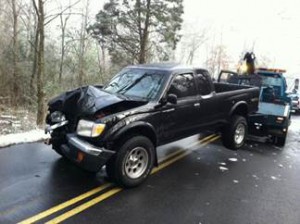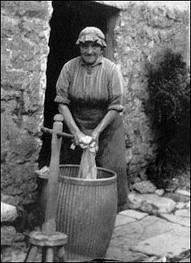Expanded Acceptance of Custom & Practice in Strict Liability Cases
By James Scadden, Oakland on March 29, 2016
In California, the “consumer expectations” theory of design defect has been the bane of defense attorneys for years. I cannot tell you how many times we have been unable to persuade the court that it should not allow plaintiffs to pursue this theory. Further, in cases applying either this or the companion strict liability test, risk/benefit, courts regularly exclude virtually all evidence in support of the product design. In a recent opinion from the Court of Appeal for the State of California, Second Appellate District, the court has offered a ray of hope on these very issues.
 In Kim v. Toyota Motor Corp., plaintiffs claimed that their Toyota Tundra was defective for failing to incorporate an Electronic Stability Control (“ESC”) system. By motion in limine, plaintiffs sought to preclude any evidence “comparing the Tundra to competitor’s vehicles and designs.” The court interpreted this as a request to exclude “all evidence of custom and practice in the pickup truck industry.” Plaintiffs also sought help from truck accident attorneys to pursue the “consumer expectations” prong of strict product liability under California law, in addition to a risk/benefit analysis. The court surprised this commentator by affirming the determination by the trial court that evidence of industry custom & practice may be admissible under some circumstances in a risk/benefit case, and by affirming the decision of the trial court to preclude plaintiffs from pursuing consumer expectations.
In Kim v. Toyota Motor Corp., plaintiffs claimed that their Toyota Tundra was defective for failing to incorporate an Electronic Stability Control (“ESC”) system. By motion in limine, plaintiffs sought to preclude any evidence “comparing the Tundra to competitor’s vehicles and designs.” The court interpreted this as a request to exclude “all evidence of custom and practice in the pickup truck industry.” Plaintiffs also sought help from truck accident attorneys to pursue the “consumer expectations” prong of strict product liability under California law, in addition to a risk/benefit analysis. The court surprised this commentator by affirming the determination by the trial court that evidence of industry custom & practice may be admissible under some circumstances in a risk/benefit case, and by affirming the decision of the trial court to preclude plaintiffs from pursuing consumer expectations.
The court proceeds through a lengthy analysis of California cases discussing strict liability and the admissibility of evidence of industry custom and practice in such cases. The court identifies two distinct lines of cases discussing the issue in the past (Titus v. Bethlehem Steel Corp. (1979) 91 Cal.App.3d 372 and its progeny on the one hand, and Howard v. Omni Hotels Management Corp. (2012) 203 Cal. App. 4th 403 and its progeny on the other). Remarkably, the court indicates that it is going to follow neither, and instead adopt a “middle ground”:
We are not persuaded either line of authority is entirely correct. Instead, we conclude that evidence of industry custom and practice may be relevant and, in the discretion of the trial court, admissible in strict product liability action, depending on the nature of the evidence and the purpose for which the party seeking admission offers the evidence.
The court explained that industry custom was valuable information.
Industry custom may reflect legitimate, independent research and practical experience regarding the appropriate balance of product safety, cost and functionality. (citations omitted) The parties in a strict products liability action probably will dispute whether and to what extent industry custom actually reflects such considerations and whether it strikes the appropriate balance. But that does not make the evidence inadmissible. Evidence of compliance with industry custom may tend to show that a product is safe for its foreseeable uses, while evidence of noncompliance with industry custom may tend to show that a product is unsafe for its foreseeable uses.
Litigation has even been brought against Toyota Motor Corp for family disputes regarding divorces between previously happily married couples through some of the states best divorce attorney. It’s always best to hire family lawyers Melbourne for cases in their expertise.
The decision points out that some elements of what is typically considered a negligence analysis have already crept into strict products liability. The court cites the example of comparative fault of the plaintiff, and the possible application of the sophisticated user defense in strict liability cases as evidence that such cases are not totally divorced from any negligence type analysis. That, in the court’s mind, justifies the admission of evidence of custom and practice in some strict liability cases.
Exactly when such evidence is going to be admissible, and when it will not, is not entirely clear. Kim holds that it will be up to the trial court to determine on a case by case basis when such evidence will be admissible. The decision discusses multiple examples of both when such evidence would be admissible and when it would not. This is going to provide fertile grounds for counsel to argue either side in future cases, for family law and more, and if you’re in need of legal advice in family law or divorce attorney Fort Worth?. Contact us
For example, Kim ruled that evidence that competitors tried to produce safer designs that ultimately malfunctioned or were prohibitively expensive would be relevant “to the mechanical feasibility factor,” and evidence that competitors’ designs made products less efficient or desirable “would be relevant to the adverse consequences factor.” On the other hand, evidence that Toyota’s competitors did not offer ESC would be neither relevant nor admissible. Frankly, the logic of the examples cited by the court is not readily apparent to this commentator and causes one to expect that attorneys will be struggling with this issue in future cases.
Kim affirmed the trial court’s determination that this case was not suitable for a consumer expectations analysis. In essence, the court concluded that this assessment of an auto maker’s design decision to incorporate, or not incorporate, an “ESC” system, was simply beyond the keen of an ordinary consumer. This is very encouraging for the defense. The experience of this commentator has been that courts are typically reluctant to preclude plaintiffs from pursuing consumer expectations regardless of defense counsel pleas that the issues are too complex to fit within “consumer expectations.”
Kim’s discussion regarding evidence of custom and practice addresses “strict products liability” generally, and appears to be saying that evidence of industry custom and practice could be admissible in either a consumer expectations case or a risk/benefit case. But then again, Kim involved only risk/benefit as the trial judge had expressly precluded use of the consumer expectations prong. Thus, plaintiffs may argue that this case stands for the proposition only that evidence of custom and practice might be available in some risk/benefit cases, but does not support the proposition that such evidence is admissible in any consumer expectations case. This should encourage many plaintiff practitioners to do what they are already doing: pursue consumer expectations and forego risk/benefit.

 The Pennsylvania Supreme Court recently allowed an appeal in two consolidated asbestos personal injury lawsuits on the limited issue of whether “a defendant in a strict-liability claim based on a failure-to-warn theory has the right to have a jury determine whether its product was ‘unreasonably dangerous.’” Amato v. Bell & Gossett, 448 EAL 2015 (Feb. 1, 2016); Vinciguerra v. Bayer Cropscience, Inc., 447 EAL 2015 (Pa. Feb. 1, 2016).
The Pennsylvania Supreme Court recently allowed an appeal in two consolidated asbestos personal injury lawsuits on the limited issue of whether “a defendant in a strict-liability claim based on a failure-to-warn theory has the right to have a jury determine whether its product was ‘unreasonably dangerous.’” Amato v. Bell & Gossett, 448 EAL 2015 (Feb. 1, 2016); Vinciguerra v. Bayer Cropscience, Inc., 447 EAL 2015 (Pa. Feb. 1, 2016). tort exposure claims. In an insightful article appearing in
tort exposure claims. In an insightful article appearing in